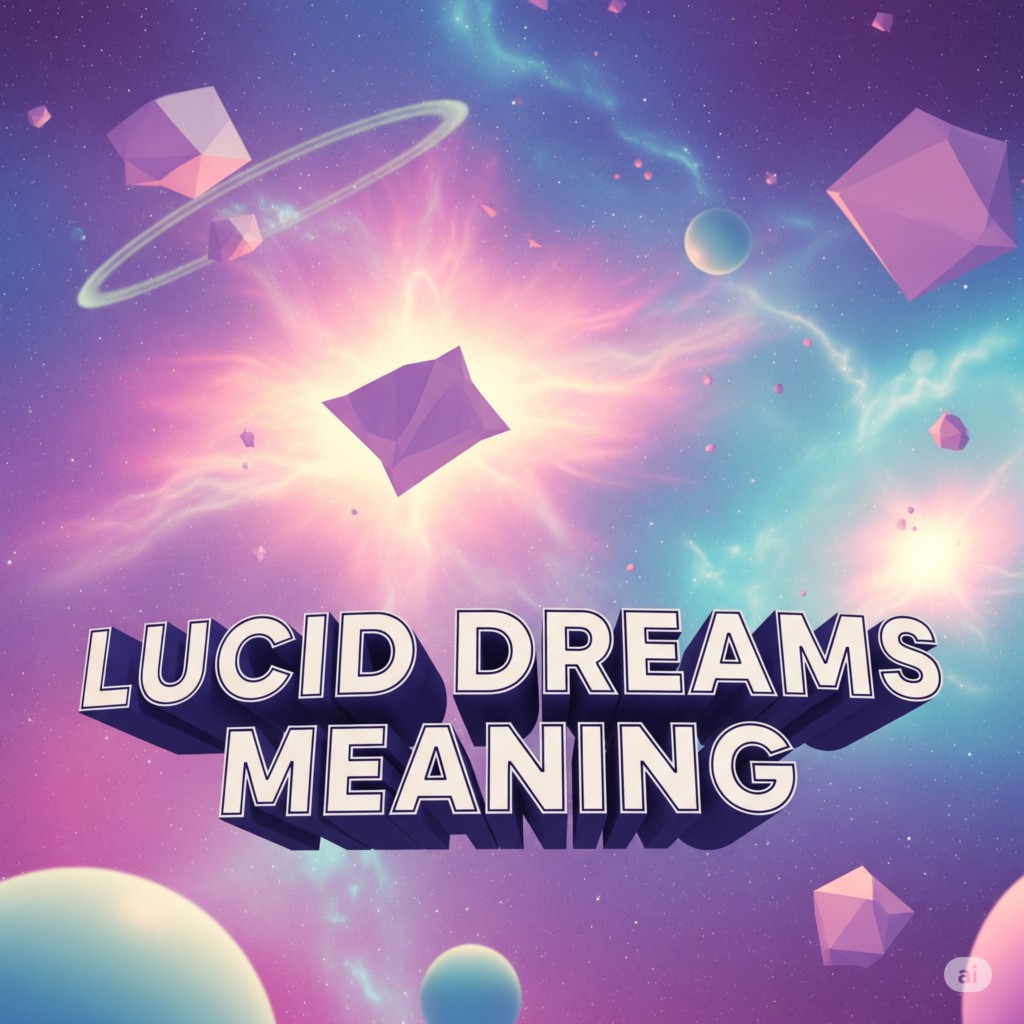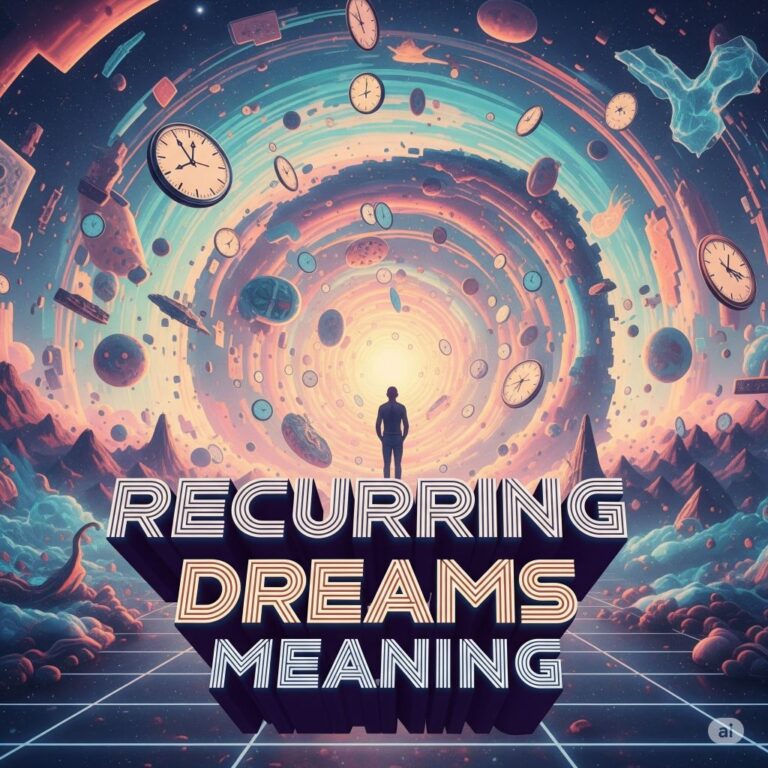
Lucid dreaming is a fascinating state of consciousness where the dreamer becomes aware that they are dreaming, allowing for varying degrees of control over the dream environment, narrative, and their own actions within the dream. This phenomenon has captivated the interest of psychologists, researchers, and those seeking deeper self-awareness or creativity throughout history. Lucid dreaming opens a unique portal to explore the imagination, confront fears, engage in personal development, and unleash creative potential.
This comprehensive article delves into the meaning and interpretation of lucid dreams, exploring their psychological foundations, historical and cultural perspectives, techniques for inducing lucid dreams, the benefits they offer, and practical insights on how to navigate this extraordinary dream state.
What Are Lucid Dreams?
Lucid dreams occur when the dreamer recognizes that they are in a dream state while still experiencing the dream itself. This awareness allows the dreamer to:
- Recognize Dream Signs: Identify elements that are unreal, illogical, or internally inconsistent, leading to awareness of the dream state.
- Manipulate the Dream Environment: Actively change the course of events, alter the dream’s narrative, or decide the actions of characters.
- Experience Vivid Sensations: Often described as more vivid and immersive than ordinary dreams due to the dreamer’s awareness and engagement.
Key Characteristics of Lucid Dreams
- Awareness: The dreamer understands they are dreaming.
- Control: Many lucid dreamers can manipulate aspects of the dream experience.
- Vividness: Dreams often feel more real and vivid compared to typical dreams.
- Emotional Engagement: Heightened emotional experiences can occur, whether positive or negative.
- Variable Recall: While some dreamers may remember what triggered their lucidity, others may forget their waking life’s context.
Historical and Cultural Perspectives
1. Ancient Cultures
Lucid dreaming has been recognized in various ancient cultures throughout history:
- Tibetan Buddhism: Lucid dreams are seen as a part of spiritual practice. Practitioners often engage in “dream yoga” to develop self-awareness and explore subconscious realms.
- Greek Philosophy: Philosophers like Aristotle acknowledged and recorded experiences similar to lucid dreams, considering them aspects of rational thought during sleep.
- Native American Traditions: Many Indigenous cultures view dreams as important communication from ancestors, some of which involve recognizing lucidity and control.
2. Modern Perspectives
Modern psychology and dream research have increasingly validated the phenomenon of lucid dreaming:
- Scientific Research: Studies by scientists like Keith Hearne and Stephen LaBerge have confirmed the existence of lucid dreaming through physiological monitoring and self-reports from dreamers.
- Pop Culture Influence: Films like Inception and books exploring dream manipulation have popularized the concept, inspiring many to explore their own dreams intentionally.
The Science of Lucid Dreaming
1. Neuroscience
Research on lucid dreaming has helped uncover the brain mechanisms at play:
- Prefrontal Cortex Activation: This region, associated with self-awareness, critical thinking, and decision-making, is more active during lucid dreams. This suggests that lucid dreaming allows for conscious thought within the dream state.
- REM Sleep: Lucid dreaming typically occurs during REM sleep, when brain activity is heightened, allowing for vivid imagery and emotional experiences.
2. Cognitive Features
- Reality Testing: Engaging in reality checks (questioning if you’re awake) can lead to recognizing dream states. Lucid dreamers often practice these checks in waking life to promote lucidity during sleep.
- Lucid Dream Induction: Techniques such as WILD (Wake-Initiated Lucid Dreaming) and MILD (Mnemonic Induction of Lucid Dreams) help facilitate lucid experiences.
Techniques for Inducing Lucid Dreams
While some individuals naturally experience lucid dreams, many techniques can help increase the likelihood of achieving lucidity during dreams:
1. Mnemonic Induction of Lucid Dreams (MILD)
- Before sleep, repeat a phrase or affirmation such as “I will realize I’m dreaming” as a form of self-suggestion.
- Visualize becoming lucid in a dream as you fall asleep.
2. Wake-Initiated Lucid Dreaming (WILD)
- Wake up after 5–6 hours of sleep and remain awake for a short time (15-30 minutes) before going back to sleep. This technique may lead directly into a lucid dream state.
3. Reality Checks
- Regularly question reality during waking hours, asking, “Am I dreaming?”
- Perform simple checks (like looking at a clock or pinching your nose and trying to breathe) that will yield different results in dreams than in waking life.
4. Dream Journal
- Maintain a dream journal to enhance dream recall. Recording dreams upon waking improves overall dream awareness, which can facilitate future lucidity.
5. Meditation and Mindfulness
- Practice mindfulness meditation to improve self-awareness. Cultivating heightened awareness while awake can translate into recognizing when you are dreaming.
Psychological Benefits of Lucid Dreaming
1. Emotional and Psychological Healing
Lucid dreaming can serve therapeutic purposes:
- Nightmare Management: Lucid dreamers can confront and alter their nightmares or engage with fears directly, often leading to decreased recurrence of anxiety-laden dreams.
- Processing Trauma: The dreamer can explore past traumatic events or unresolved issues in a controlled environment, potentially leading to insight and healing.
- Self-Exploration: Engaging with dreams from a place of lucidity allows deeper introspection and discovery of unconscious desires and motivations.
2. Creativity and Problem Solving
- Lucid dreaming is often linked to enhanced creativity. Artists, writers, and inventors have reported using lucid dreams to explore innovative ideas and techniques.
- Examples of people using lucid dreams to find solutions to complex problems:
- Elias Howe credited a dream for his invention of the sewing machine.
- Paul McCartney composed a melody for “Yesterday” after hearing it in a dream.
3. Personal Growth and Empowerment
Navigating dreams consciously empowers individuals, fostering a sense of agency:
- Autonomy in Dreams: Controlling one’s actions in dreams can build confidence and translate to greater confidence in waking life situations.
- Fear Confrontation: The ability to face fears within the dream can improve real-life coping mechanisms and resilience.
Common Themes in Lucid Dreams
1. Flying and Freedom
- Many lucid dreamers experience the sensation of flying, representing liberation from constraints and a desire for exploration or transcendence.
2. Transformation
- Lucid dreams often involve changing forms (e.g., becoming an animal, a superhero), reflecting personal power and adaptability, representing change and self-discovery.
3. Facing Fears
- Confronting antagonistic figures or terrifying scenarios often occurs in lucid dreams, providing the opportunity to overcome fears consciously.
4. Meeting Guides or Allies
- Encountering wise figures or protective beings that offer advice or support during lucid dreams serves as a mechanism for personal growth and insight.
Cultural and Spiritual Perspectives
Ancient Cultures: Many societies have recognized the significance of lucid dreaming and its potential for self-discovery and spiritual insight.
- Tibetan Buddhism:
- Dream Yoga: This practice encourages becoming aware in dreams as a means of spiritual enlightenment and understanding the illusory nature of reality.
- Native American Traditions:
- Some tribes view dreams (including lucid ones) as pathways to communication with spiritual guides or ancestors, providing insight and clarity.
- Modern Spirituality:
- New Age beliefs often tie lucid dreaming to spiritual awakening, energy work, and personal growth, encouraging individuals to explore consciousness beyond the physical realm.
The Therapeutic Potential of Lucid Dreaming
1. Cognitive Behavioral Therapy (CBT)
Lucid dreaming techniques are increasingly incorporated into therapeutic practices:
- Imagery Rehearsal Therapy: Used especially for treating nightmares, this method teaches individuals to rewrite the narrative of their dreams while in a lucid state, potentially alleviating distress.
2. Treatment of Anxiety and Phobias
By consciously engaging with fears and phobias in the dream state, individuals can explore underlying causes and develop coping strategies, leading to a reduction in anxiety symptoms.
Conclusion
Lucid dreaming offers a remarkable exploration of consciousness, revealing the intricate connection between our waking lives and dream experiences. Through awareness and intentionality, individuals can navigate their dreams with clarity, unlocking pathways for creativity, emotional healing, and self-discovery.
Whether used for problem-solving, confronting fears, or exploring the expanses of imagination, lucid dreams hold profound potential to enrich our understanding of ourselves and the world around us. By embracing this unique state and cultivating a relationship with your dreams, you can transform the nighttime experience into a meaningful journey of growth and exploration.






